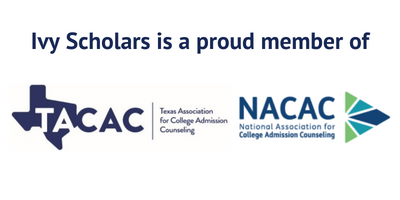We all know the Olympics, that time every four years when we remember that watching gymnastics is pretty fun actually. There are some high school students who compete in the Olympics (again, mostly in gymnastics), though this is a bit out of reach for most students. Far more accessible, and still of interest to college admissions officers, are the various science olympiads.
Just as athletes compete to show their prowess at the regular Olympics, so can high school students demonstrate their mastery of any number of subjects through the science olympiads, a series of national and international competitions. In this article, we’re going to go through a number of these, to explore what your options are, and then discuss if these are a good opportunity for you to pursue. Let’s jump right in!
International Math Olympiad
This is the most prestigious math competition globally for high school students, with over 100 countries participating each year. The qualifying tests for this in the US are the AIME and the AMC, which many high schoolers take if they are in an advanced math class.
Each country sends a team of six to this competition. The test consists of six questions over two days, each of which is worth seven points, for a maximum score of 42. You have four and a half hours to solve the three problems each day. Calculators are not allowed or needed. All problems can be understood by anyone with high school math, and do not require knowledge of calculus or analysis to solve, though both can be helpful.
As with AIME and AMC, the point of these questions is to be fiendishly difficult while having simple solutions. These often require creative applications, and delve into fields of math outside those covered in normal high school or college courses.
This is an incredibly competitive opportunity, and even qualifying for a national team is an incredible achievement. Students interested in math should focus on the qualifying exams, which are similar in questions and format to the grander olympiad. The competition takes place in July each year (though has occurred in June and September in the past).
Science Olympiad
Note that this is distinct from the International Science Olympiad, as this competition is for students in the US only. Teams of students compete in 23 science related events at the regional, state, and national level. There are also invitational events; these are generally hosted by a local university and serve as practice for other events; they do not count for qualifications. Both middle and high schools field teams.
Teams are allowed up to fifteen members who compete in the 23 events. This generally happens in a single day, but some states, like Texas, run over multiple days. All of the events fall into one of the five following categories:
- Life, Personal, and Social Science
- Earth & Space Science
- Physical Science & Chemistry
- Technology & Engineering
- Inquiry & Nature of Science
These are then either knowledge based tests, which consist of written exams; hands on tests, which include practical labs and device testing; or engineering based, where teams complete a device ahead of time which needs to complete certain tasks on the day of the competition. Most events only allow two team members to participate, though some allow three. This encourages specialization, with certain team members assigned to certain portions of the event based on their strengths.
Teams are generally associated with a school, though homeschool groups field teams as well. Events and rules change each year to encourage dynamism and to prevent specific teams from continuously dominating.
Each event is scored differently based on metrics for that event. Teams are then ranked based on their performance. Overall score is based on your rank from each event. In the case of a tie, certain extra events are planned to serve as tie breakers. The top few teams from regional competitions advance to state, and the top one or two teams from state advance to nationals. Larger states get to send more teams to nationals, due to increased competition and level of student participation.
The timing of regional and state competitions varies; the national competition is always held in May. This competition requires a good amount of preparation, and is a major time commitment.
US National Chemistry Olympiad
Generally abbreviated USNCO, this competition is run and hosted by the American Chemistry Society, and is used to select the four member team who represents the US at the International Chemistry Olympiad.
The competition begins with local exams. You must register with your local ACS coordinator to sign up for this exam; not everyone who registers will be able to participate. Around 16,000 students take this exam each year. Each local section coordinator selects eight students to take the national exam (or more in the case of exceptionally large sections). Around 1,000 students take the national exam each year. The local exam is held in March, and the national exam in April.
The national exam is hosted at university campuses across the country, and consists of three sections:
- A 90 minute, 60 question multiple choice test. Each question is worth 1 point, with no penalty for guessing. Questions are loosely grouped by topic, with the following subjects covered: descriptive chemistry/laboratory techniques, stoichiometry, gasses/liquids/solids, thermodynamics, kinetics, equilibrium, electrochemistry, electronic structure/periodic trends, bonding theories, and organic chemistry.
- A 105 minute free response section with eight questions. These require written explanations and full calculations.
- A 90 minute lab practical, where students must complete two tasks using only the materials provided.
The top 20 scorers on the national test are invited to a two week summer camp, from which the four member international olympiad team is selected. The study camp takes place in June, while the international competition is in July. The top 50 scorers on the exam are awarded high honors, and the next 100 scoring are awarded honors. Getting any level of honors from this exam is quite impressive.
This is the top chemistry specific event in the country, though other competitions have chemistry as a component. It is not particularly time intensive, and complements other events you may participate in if chemistry is already a focus of yours.
United States of America Biology Olympiad
Abbreviated as USABO, this is a national competition hosted by the Center for Excellence in Education, which is used to select the US team for the International Biology Olympiad. This is an incredibly rigorous selection process, one that has caused the US to have remarkable success in the international competition.
USABO finalists are selected through two rounds of testing. The first is the open round; this may be entered by any high school student, who registers through their school or a testing center. High Schools must register with the USABO to administer this test. This is a 50-minute multiple choice exam, with no penalty for wrong answers. The top 10% of students who complete this exam are then invited to take the second round of testing.
The second round is generally administered in March. This test takes 120 minutes to complete, and has the following three sections:
- A simple multiple choice
- A more complex multiple choice, with multistep problems and the chance of multiple correct answers, where students must select all correct answers
- Short answer or essay questions
The top 20 scoring students on that exam are invited to attend the national finals round. This is an extended program; students may take 24 hours off to attend high school graduation, which the competition knows it might conflict with. This final portion is a nine day course where students receive advanced instruction from university professors. On the tenth day, there is a ten hour exams, consisting of two parts:
- A six hour practical exam
- A three hour theoretical exam
1st-4th place receive gold and a chance to represent the US at the international Olympiad, 5th-8th receive silver, and 9th-12th receive bronze. That said, simply making it to the final round is a major accomplishment, one colleges prize.
United States of America Computing Olympiad
Abbreviated as USACO, this is an online coding competition open to high school students, and is used to select the national team for the International Olympiad in Informatics. Four contests are held each year, in December, January, February, and the US Open (held in March-April).
Participants compete in increasingly difficult divisions; performing well in one division allows you to compete in the higher level in the next round. These are bronze, silver, gold, and platinum. Each division is provided with a set of three problems to be completed in three to five hours. You may complete these using C, C++, Java, or Python.
Solutions are judged not just on the correctness of the answers, but also based on restrictions on run time and memory usage. Each problem is scored the same, but problems are intentionally designed to be difficult, and scores are often lower than in other programming competitions.
The US Open has the same format, but is more challenging, and is a major decider in invitations to the national team. All of these exams are held online. They are not proctored, but if cheating is detected that competitor is banned from the competition for life.
If you are interested in coding generally, this is a great opportunity to test and hone your skills, regardless of how you do.
United States of America Mathematical Olympiad
Usually abbreviated as USAMO, this is the premier mathematical competition in the US. It is the final round of the math competitions which select the team to compete in the International Math Olympiad.
Participation in the USAMO is by invitation only, and simply qualifying to do so is one of the highest honors you can achieve in high school mathematics. You must be a US citizen or permanent resident to participate in the USAMO. Approximately 500 students participate each year; 260-270 in the USAMO, and 230-240 in the junior division. Qualification is based on your scores on the AMC and AIME. The cutoff changes each year, depending on the pool of test takers.
The competition itself is a six question nine hour proofs based examination spread over two days, with students completing three questions over four and a half hours each day. Each question is graded on a scale of 0-7 using the following rubric:
- 0: No or trivial work completed on the problem.
- 1-2: Progress is evident on the problem, but it is not solved.
- 3-4: All steps are present, but lack clarity (this score is rarely given).
- 5-6: There is a complete solution with minor errors.
- 7: Perfect solution.
The maximum score possible on the exam is 42. Generally, students take the test at their high school, overseen by a faculty member. Student responses are faxed to the administrators at the end of each testing period. The top twelve scorers, and top eighteen next highest from grade 11 and under are invited to the Mathematical Olympiad Program, a summer program hosted by Carnegie Mellon University to prepare students for the IMO.
None of the questions on the test require calculus (though its use is allowed), and instead focus on geometry, algebra, combinatorics, and number theory. They are designed to require creativity to solve, and application of mathematical concepts students may not be otherwise familiar with.
Are Science Olympiads Right for You?
This is entirely dependent on your personal aptitudes and desires. In their own right, olympiads are generally a very low time commitment; most are a single test lasting only a few hours, at least for the first round. The other rounds may require a slightly higher investment, but it’s still less than many other activities, at least on the surface.
Now, to actually do well on these tests, you generally need to do a fair bit of studying on these subjects outside of what you do in school. That said, if you already do this (such as pursuing coding projects or independent research in one of these fields), then olympiad competition can dovetail nicely.
In general, there’s no harm in trying it and seeing how you do, but for a chance to do well, the olympiad should be in coordination with some of the other activities you pursue.
Note that winning or becoming a finalist in these competitions is one of the most impressive things you can do in terms of establishing your intellectual vitality for colleges. Doing lower, however, generally gets you nothing. These are very all or nothing in that respect.
Final Thoughts
There are many ways to impress colleges through your honors and activities, and scientific olympiads are one such. These are not the best opportunities for every student to pursue, but we hope that this has opened your eyes to this as a possibility, and given a sense whether it’s a good fit for you.
If you are looking for help picking the ideal opportunities for you to explore, or want advice on how an olympiad may fit into your own college application plans, then schedule a free consultation today. Our candidacy building program specializes in helping students find the best opportunities to support their interests, and we always love assisting high school students pursue their dreams.








